Abstract
Addition of an extract prepared from a proliferating cell line to nuclei isolated from resting tissues such as frog liver and spleen resulted in the stimulation of DNA synthesis as assayed by [3H]dTTP incorporation. This stimulated incorporation of [3H]dTTP required ATP and depended on Mg2+ and deoxynucleoside triphosphates. Pulse-chase experiments showed that the synthesis of DNA in this system was discontinuous, resulting in the appearance of approximately 4S fragments and their ligation to yield higher molecular weight DNA. In addition, electron microscopic analysis of the DNA molecules from the reaction mixture showed that the frequency of replication "eyes" in the extract-stimulated reaction was 10-fold higher than that observed in controls. All of these results strongly suggest that the extract stimulated initiation of DNA replication in the chromatin of normally resting cells. Preliminary characterization by dialysis, heating, and enzyme treatments indicated that the activity is associated with one or more proteins of high molecular weight (greater than 50,000). Comparison of the levels of stimulatory activity in extracts from various mammalian and avian sources showed that the activity was present in cells proliferating either in vivo or in tissue culture. In contrast, extracts from normally resting tissues and cells had no activity. The level of activity present did not appear to be directly related to the levels of DNA polymerase. These results suggest a use for this system in studying regulation of the initiation of DNA synthesis and control of the various phases of the cell cycle.
Full text
PDF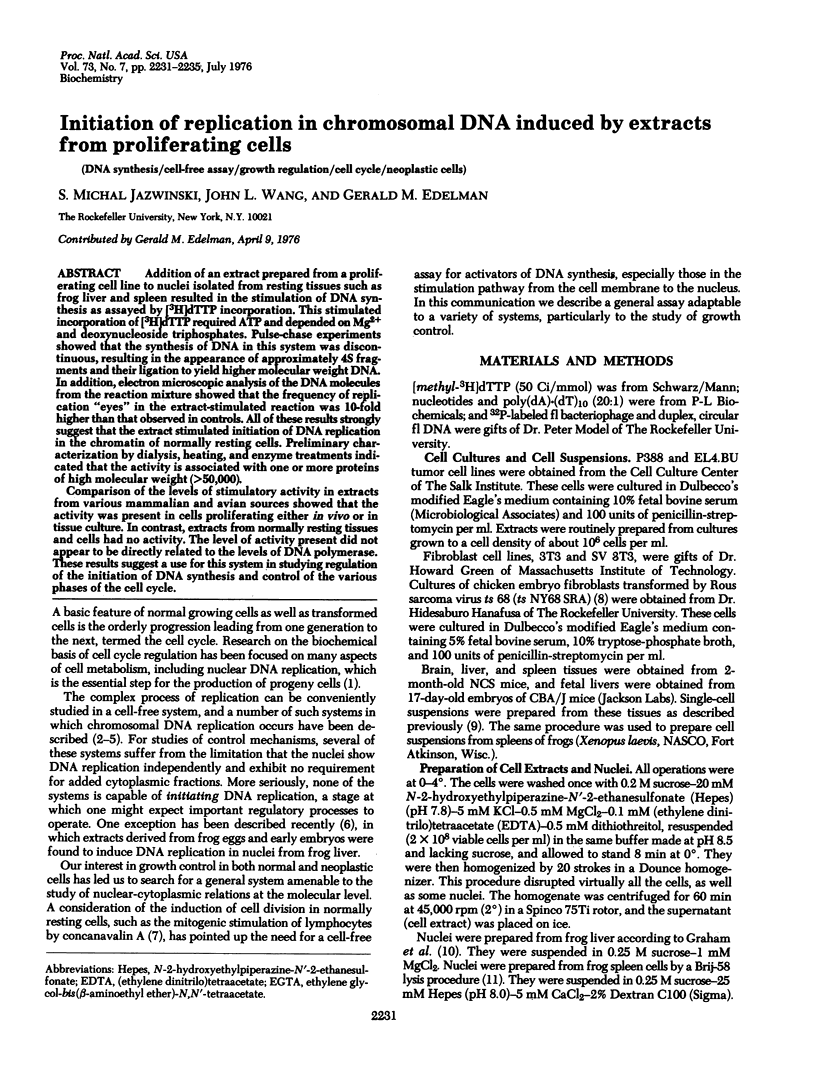
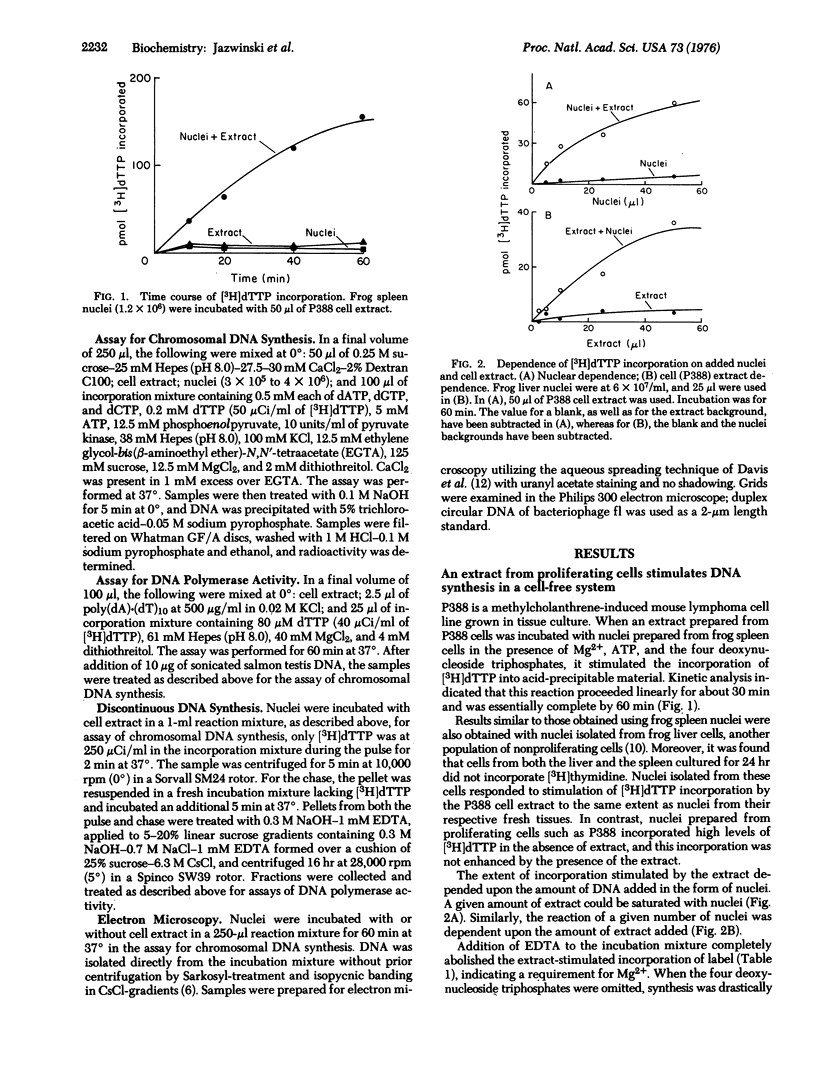
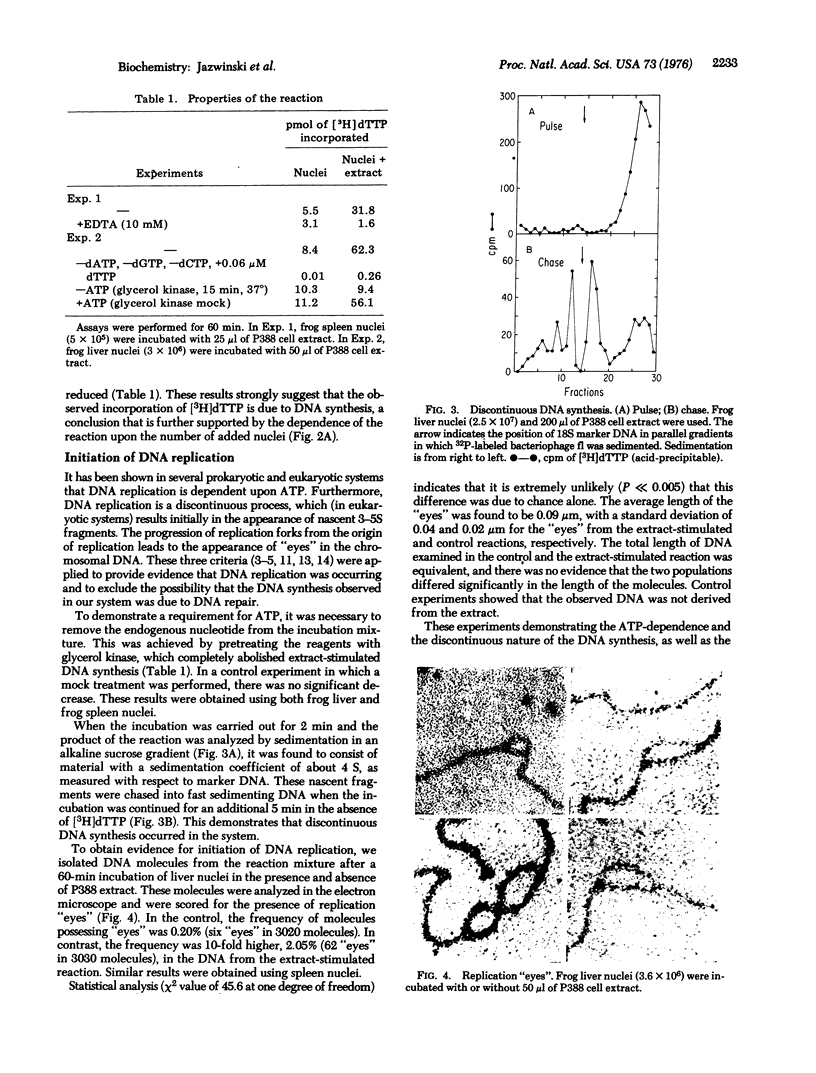
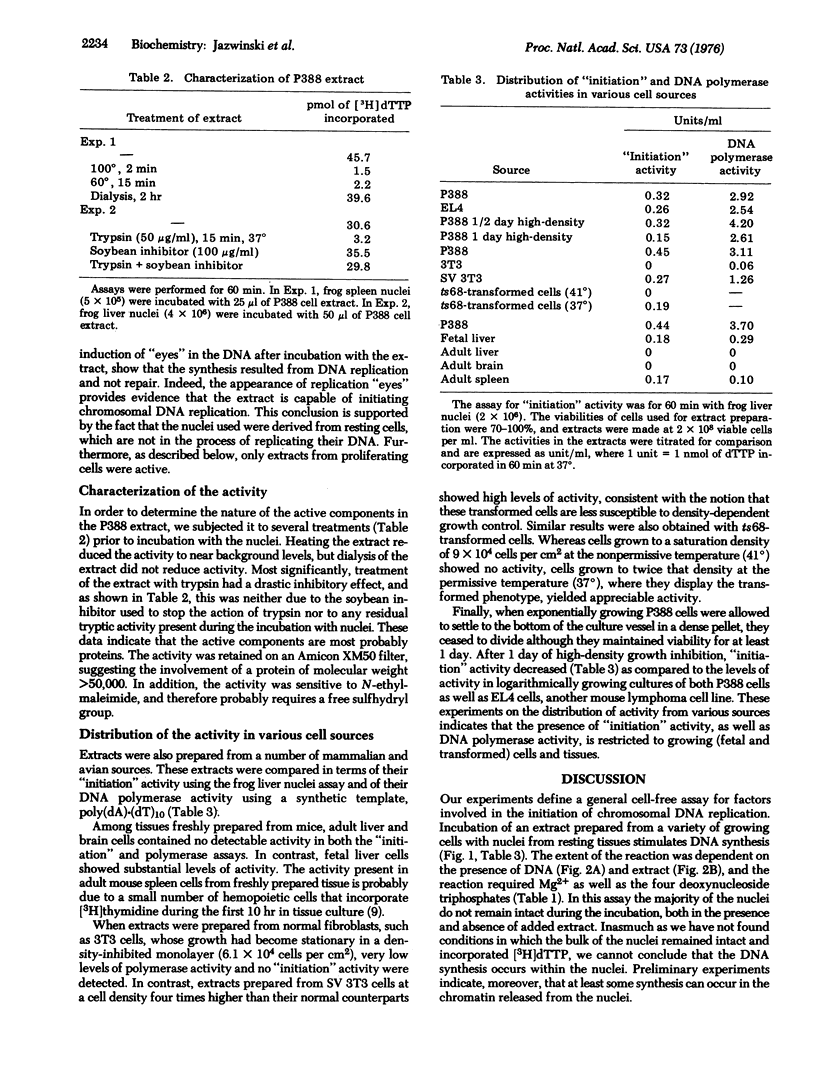
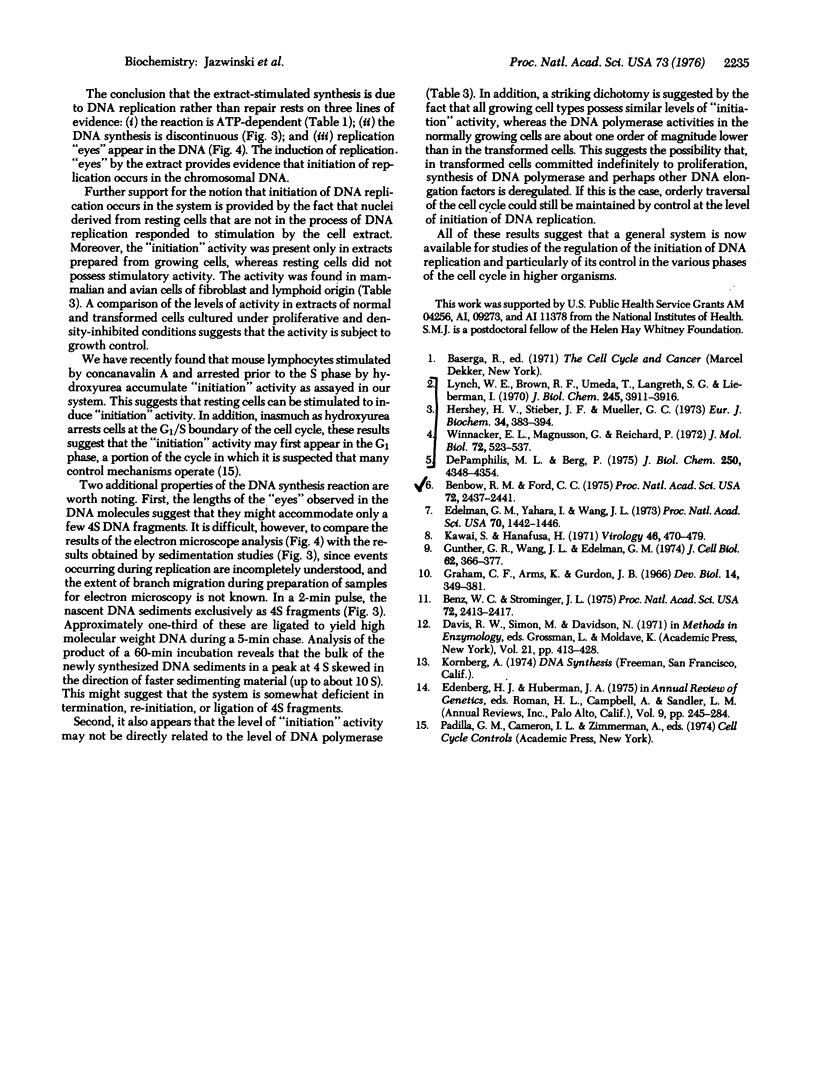
Images in this article
Selected References
These references are in PubMed. This may not be the complete list of references from this article.
- Benbow R. M., Ford C. C. Cytoplasmic control of nuclear DNA synthesis during early development of Xenopus laevis: a cell-free assay. Proc Natl Acad Sci U S A. 1975 Jun;72(6):2437–2441. doi: 10.1073/pnas.72.6.2437. [DOI] [PMC free article] [PubMed] [Google Scholar]
- Benz W. C., Strominger J. L. Viral and cellular DNA synthesis in nuclei from human lymphocytes transformed by Epstein-Barr virus. Proc Natl Acad Sci U S A. 1975 Jun;72(6):2413–2417. doi: 10.1073/pnas.72.6.2413. [DOI] [PMC free article] [PubMed] [Google Scholar]
- DePamphilis M. L., Berg P. Requirement of a Cytoplasmic Fraction for Synthesis of SV40 Deoxyribonucleic Acid in Isolated Nuclei*. J Biol Chem. 1975 Jun 10;250(11):4348–4354. [PubMed] [Google Scholar]
- Edelman G. M., Yahara I., Wang J. L. Receptor mobility and receptor-cytoplasmic interactions in lymphocytes. Proc Natl Acad Sci U S A. 1973 May;70(5):1442–1446. doi: 10.1073/pnas.70.5.1442. [DOI] [PMC free article] [PubMed] [Google Scholar]
- Gunther G. R., Wang J. L., Edelman G. M. The kinetics of cellular commitment during stimulation of lymphocytes by lectins. J Cell Biol. 1974 Aug;62(2):366–377. doi: 10.1083/jcb.62.2.366. [DOI] [PMC free article] [PubMed] [Google Scholar]
- Kawai S., Hanafusa H. The effects of reciprocal changes in temperature on the transformed state of cells infected with a rous sarcoma virus mutant. Virology. 1971 Nov;46(2):470–479. doi: 10.1016/0042-6822(71)90047-x. [DOI] [PubMed] [Google Scholar]
- Lynch W. E., Brown R. F., Umeda T., Langreth S. G., Lieberman I. Synthesis of deoxyribonucleic acid by isolated liver nuclei. J Biol Chem. 1970 Aug 10;245(15):3911–3916. [PubMed] [Google Scholar]
- Winnacker E. L., Magnusson G., Reichard P. Replication of polyoma DNA in isolated nuclei. I. Characterization of the system from mouse fibroblast 3T6 cells. J Mol Biol. 1972 Dec 30;72(3):523–537. doi: 10.1016/0022-2836(72)90172-6. [DOI] [PubMed] [Google Scholar]



